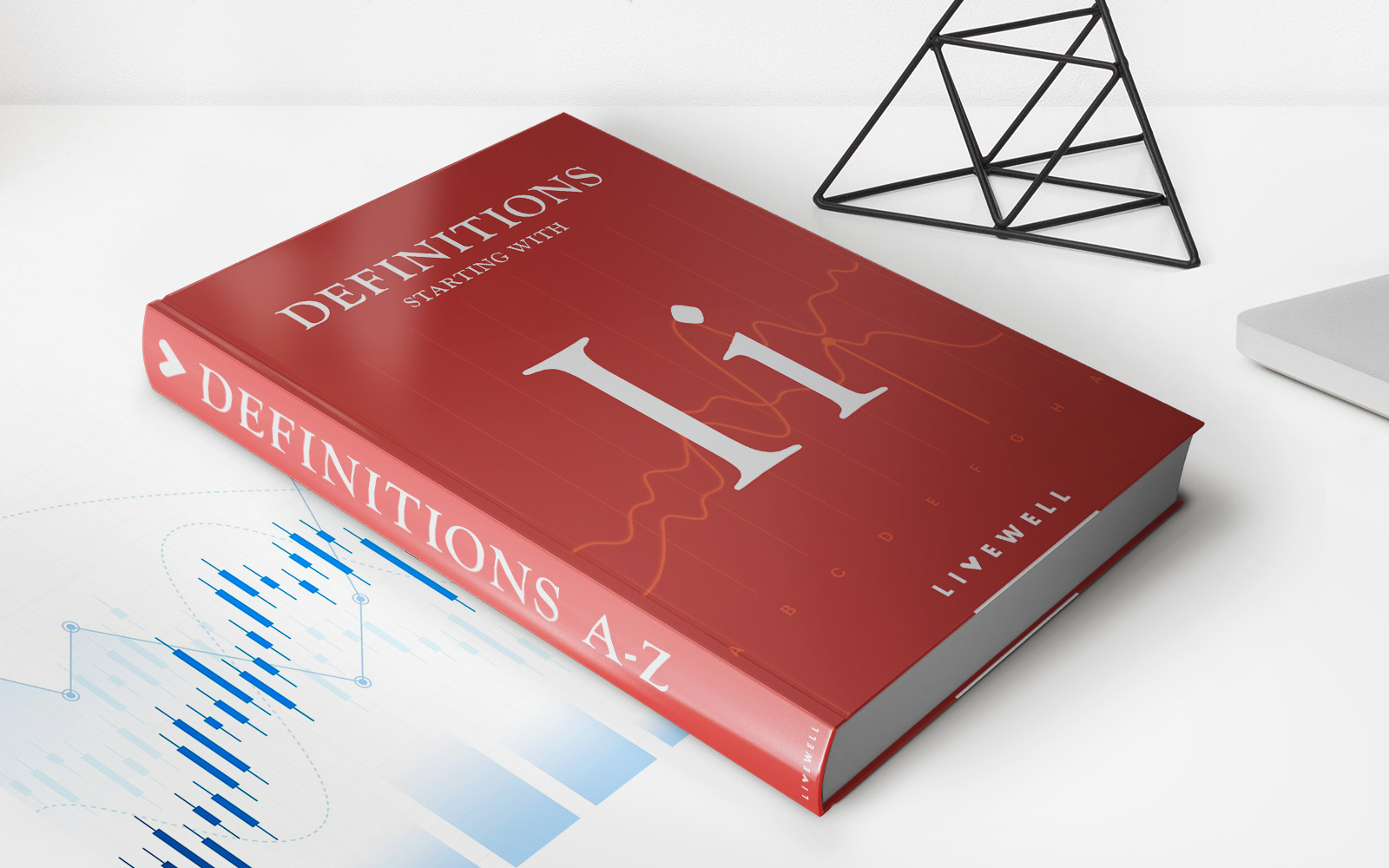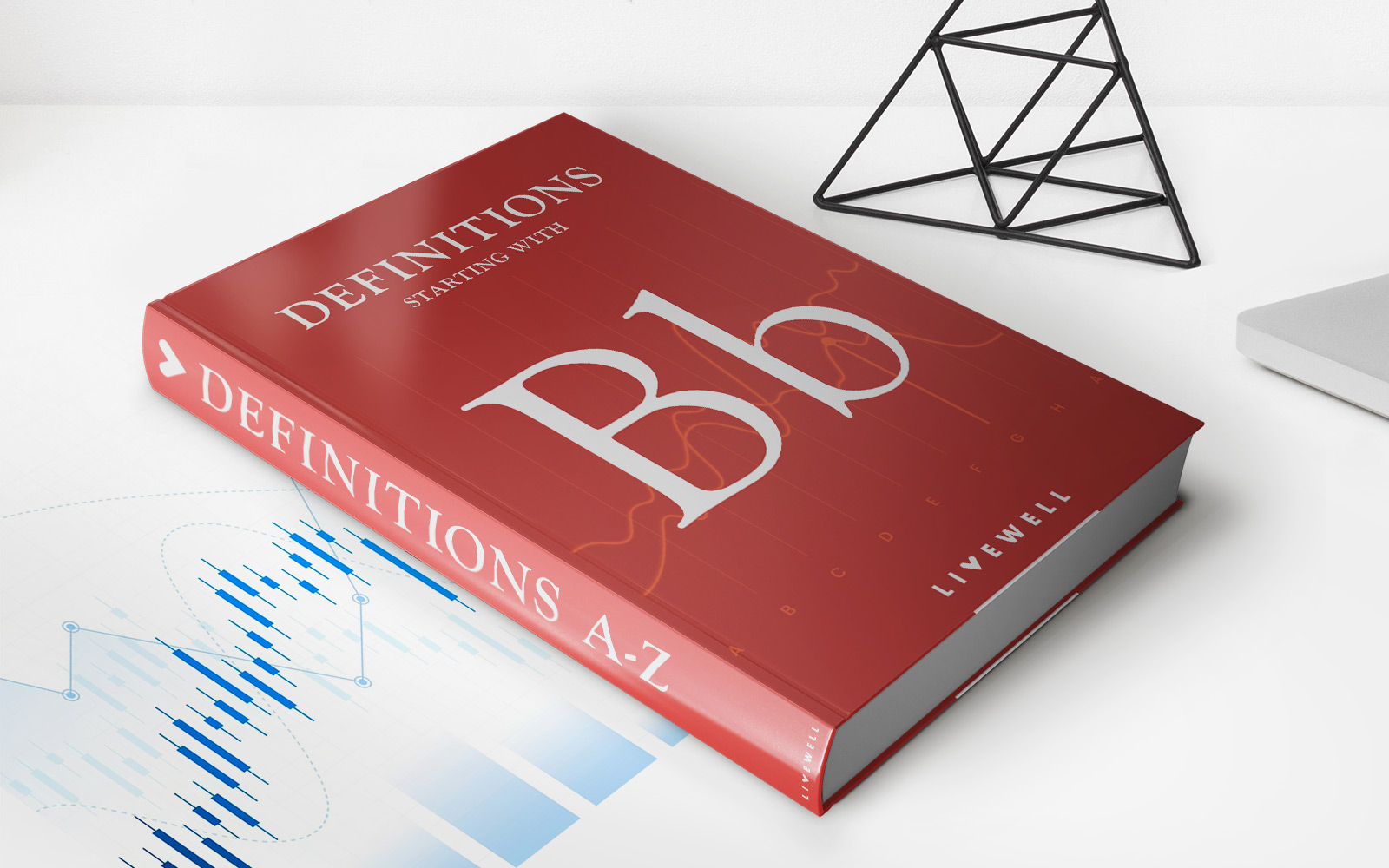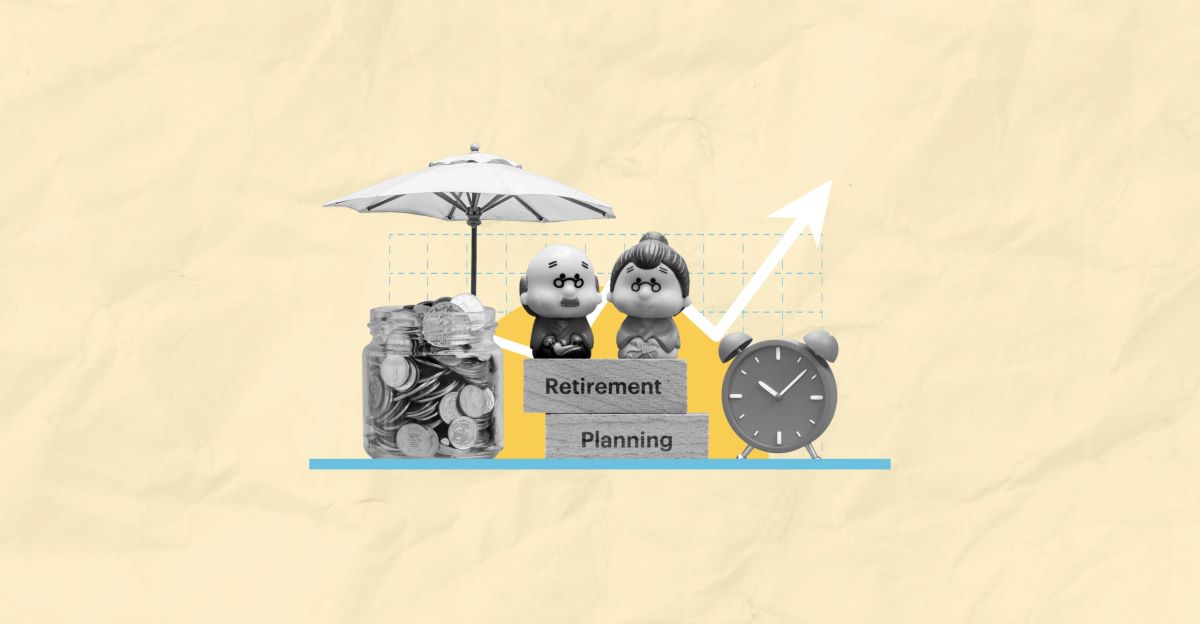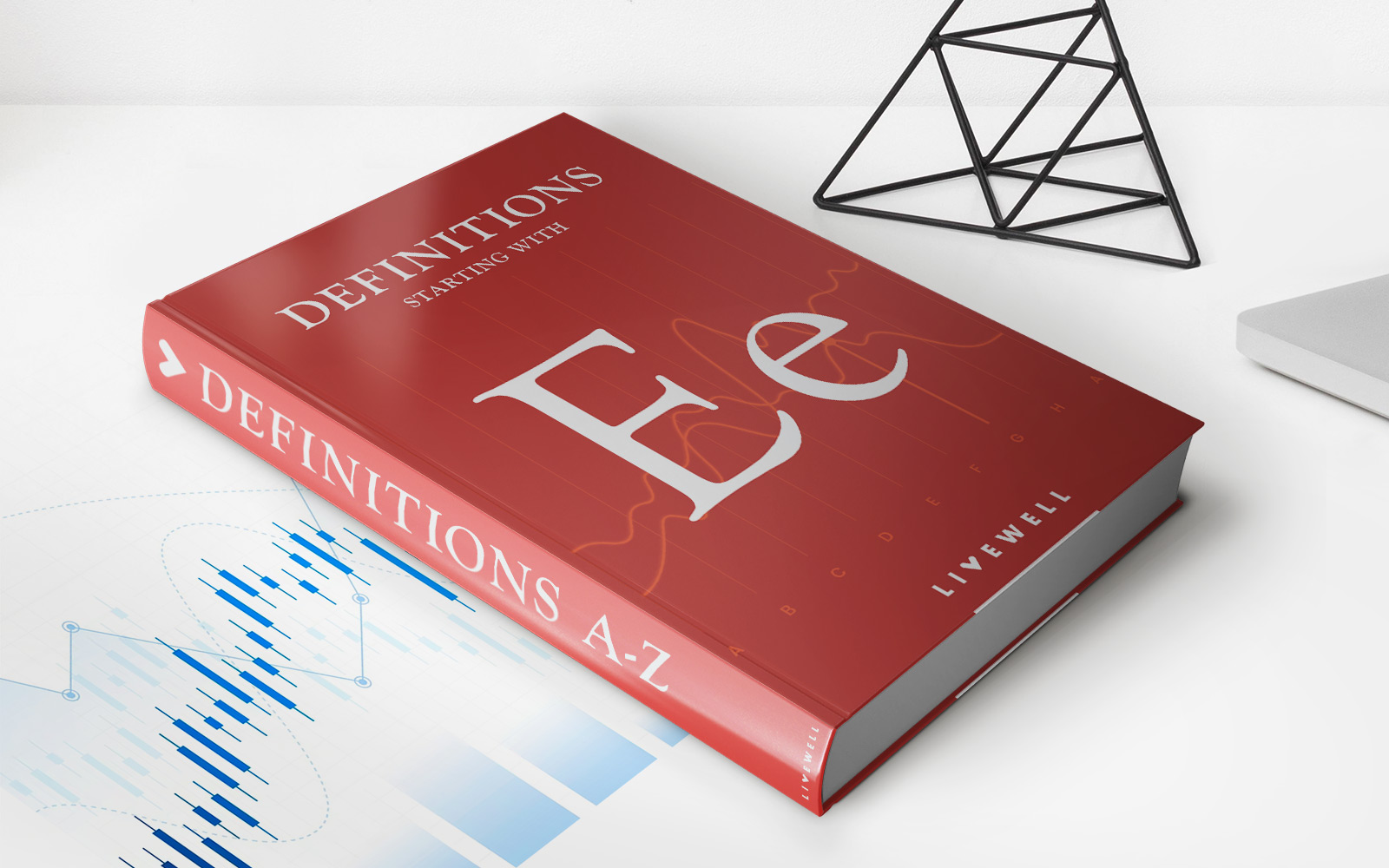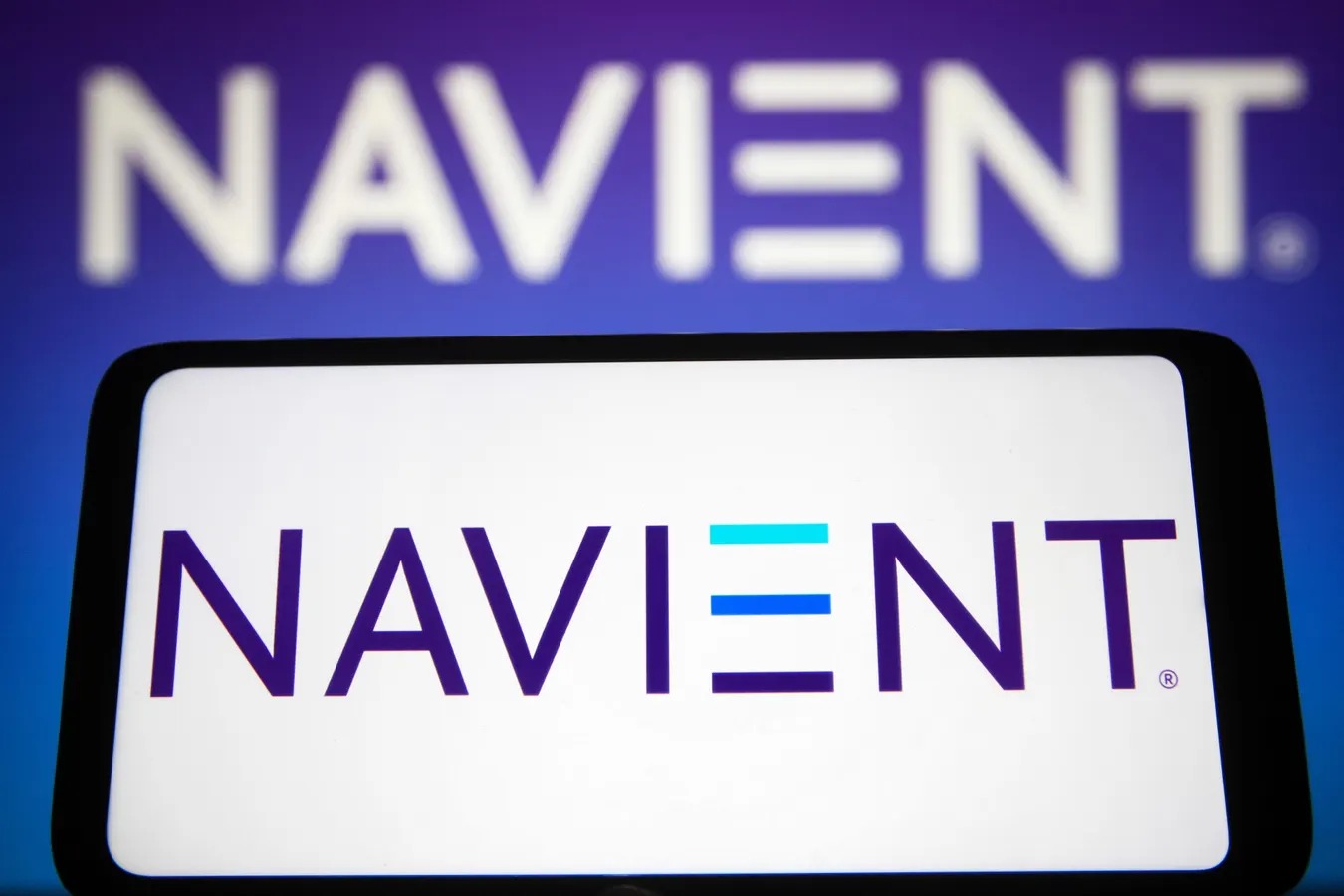Home>Finance>What Are Some Real-World Examples Of Retirement Planning Programs


Finance
What Are Some Real-World Examples Of Retirement Planning Programs
Published: January 21, 2024
Discover real-world examples of retirement planning programs and gain insights into effective finance strategies for a secure future. Explore the best practices and expert advice to maximize your retirement savings.
(Many of the links in this article redirect to a specific reviewed product. Your purchase of these products through affiliate links helps to generate commission for LiveWell, at no extra cost. Learn more)
Table of Contents
- Introduction
- Employer-Sponsored Retirement Programs
- Individual Retirement Accounts (IRAs)
- Social Security
- Defined Benefit Pension Plans
- 401(k) Plans
- Simplified Employee Pension (SEP) IRA
- Roth IRAs
- Thrift Savings Plan (TSP)
- Health Savings Account (HSA)
- Deferred Compensation Plans
- Non-Qualified Retirement Plans
- Conclusion
Introduction
Retirement planning plays a crucial role in securing a comfortable and financially stable future. It is essential to have a comprehensive strategy in place to ensure that you can enjoy your golden years without financial worries. With the vast array of retirement planning programs available, individuals can tailor their approach to suit their unique needs and circumstances. These programs often provide tax advantages, diverse investment options, and professional guidance to help individuals save and grow their retirement funds.
In this article, we will explore some real-world examples of retirement planning programs that individuals can utilize to prepare for retirement. From employer-sponsored programs to individual retirement accounts and government benefits, these programs offer various benefits and options for individuals to plan and save for their future.
It is important to note that while these programs provide valuable tools for retirement planning, it is essential to consult with a financial advisor or planner to determine the most suitable strategy for your specific situation. They can help you assess your goals, risk tolerance, and timeline to create a personalized retirement plan that aligns with your aspirations.
Now, let’s dive into the real-world examples of retirement planning programs and understand the benefits they offer.
Employer-Sponsored Retirement Programs
Employer-sponsored retirement programs are a common and popular way for individuals to save for retirement. These programs are typically offered by employers as part of employee benefits packages and can include options such as 401(k) plans, pension plans, or profit-sharing plans.
One of the most prevalent employer-sponsored retirement programs is the 401(k) plan. With a 401(k), employees can contribute a portion of their pre-tax income to a retirement savings account. Employers often provide matching contributions, adding to the employee’s savings. The funds in a 401(k) account can be invested in various investment options, such as mutual funds or stocks, allowing for potential growth over time. Additionally, 401(k) contributions are generally tax-deferred, meaning individuals won’t pay taxes on the funds until they withdraw them during retirement.
Another type of employer-sponsored retirement program is a pension plan, also known as a defined benefit plan. In a pension plan, the employer contributes to the retiree’s pension fund, which guarantees a specific amount of income during retirement based on factors such as years of service and salary. Pension plans provide retirees with a steady stream of income during their retirement years, ensuring financial stability.
Some employers also offer profit-sharing plans, where a portion of the company’s profits is distributed to employees’ retirement accounts. These plans can provide an additional source of retirement savings, allowing employees to benefit from the company’s success.
Employer-sponsored retirement programs are advantageous for several reasons. First, they often feature employer contributions or matches, effectively boosting an individual’s retirement savings. Additionally, these programs offer tax benefits, as contributions are typically made with pre-tax income. The growth of the funds within the account is also tax-deferred, allowing for potential compounding growth over time. Furthermore, employer-sponsored programs benefit from automatic payroll deductions, making it convenient and consistent for individuals to save for retirement.
It’s important to note that the availability and specifics of employer-sponsored retirement programs vary depending on the company and its policies. Consulting with HR or a benefits specialist within your organization can provide valuable information on the retirement programs available to you and how to maximize their benefits.
Individual Retirement Accounts (IRAs)
Individual Retirement Accounts (IRAs) are another popular retirement planning tool that individuals can utilize to save for their future. IRAs are individual investment accounts that provide tax advantages for retirement savings. There are different types of IRAs, including Traditional IRAs and Roth IRAs, each with its own set of rules and benefits.
Traditional IRAs allow individuals to make tax-deductible contributions, meaning they can exclude the amount contributed from their taxable income for the year. The funds in a Traditional IRA grow tax-deferred until withdrawal, at which point they are subject to income tax. This type of IRA is a suitable option for individuals who anticipate being in a lower tax bracket during retirement compared to their current working years.
On the other hand, Roth IRAs are funded with after-tax contributions, meaning individuals contribute funds that have already been taxed. The advantage of a Roth IRA is that the earnings accrued within the account are tax-free, and qualified withdrawals can be made tax-free during retirement. This makes Roth IRAs a favorable option for individuals who believe they will be in a higher tax bracket during retirement than their current working years.
IRAs provide individuals with a wide range of investment options, including stocks, bonds, mutual funds, and more. This flexibility allows investors to create a diversified portfolio suited to their risk tolerance and retirement goals.
Contributions to an IRA have certain limits set by the Internal Revenue Service (IRS). As of 2021, the annual contribution limit for both Traditional and Roth IRAs is $6,000 for individuals under the age of 50, with an additional catch-up contribution of $1,000 for individuals aged 50 and older. These contribution limits may be subject to change, so it’s important to stay updated with the current IRS guidelines.
IRAs offer individuals the freedom and control to manage their retirement savings outside of employer-sponsored programs. It’s worth noting that there are income limits and eligibility criteria for contributing to IRAs, so it’s essential to consult with a financial advisor or tax professional to determine if an IRA is the right retirement planning option for you.
Social Security
Social Security is a government program designed to provide income during retirement. It is funded through a payroll tax, where individuals and their employers contribute a portion of their income to the Social Security system throughout their working years. The funds are then used to provide a source of income in the form of retirement benefits, disability benefits, and survivor benefits.
To qualify for Social Security retirement benefits, individuals must accumulate enough credits based on their earnings history. The number of credits required depends on the individual’s birth year. Generally, individuals need to earn 40 credits, with a maximum of four credits per year, to be eligible for retirement benefits. These credits are earned by earning income and paying Social Security taxes.
The amount of Social Security retirement benefits an individual receives is based on their average earnings throughout their working years. The Social Security Administration calculates a retiree’s Primary Insurance Amount (PIA) using a formula that takes into account their highest 35 years of earnings. The PIA determines the monthly benefit amount the retiree will receive.
It’s important to note that Social Security benefits alone may not be sufficient to cover all living expenses during retirement, especially for individuals with higher income levels. However, Social Security provides a vital foundation of income that, when combined with other retirement savings and income sources, can help individuals maintain a comfortable lifestyle.
To maximize Social Security benefits, individuals can choose to delay their retirement and claim benefits at a later age. The full retirement age, which is the age at which individuals can claim full Social Security benefits, depends on their birth year. For example, the full retirement age is 66 for those born between 1943 and 1954, and it gradually increases for individuals born after that year. Delaying the claiming of Social Security benefits beyond the full retirement age can result in higher monthly benefit amounts.
Social Security benefits are an important component of retirement planning, and it’s crucial for individuals to understand how they fit into their overall financial strategy. Working with a financial advisor and utilizing online tools provided by the Social Security Administration can help individuals optimize their Social Security benefits and make informed decisions on when to claim them.
Defined Benefit Pension Plans
Defined Benefit Pension Plans are retirement programs offered by employers that guarantee a specific retirement benefit based on factors such as years of service and salary history. Unlike defined contribution plans like 401(k)s, where the employee bears the investment risk, defined benefit plans provide employees with a predetermined retirement income.
In a defined benefit pension plan, the employer contributes to a pooled fund that is professionally managed to generate returns. Upon retirement, employees receive a fixed monthly benefit for the rest of their lives, with the amount determined by a calculation based on their salary history and years of service.
The advantage of defined benefit plans is that they offer a reliable source of income during retirement. Retirees don’t have to worry about managing their investments or market fluctuations, as the burden of investment risk falls on the employer. This can provide peace of mind in knowing that they will receive a steady income stream throughout their retirement years.
However, defined benefit pension plans are becoming less common in the private sector due to their high costs and potential financial liabilities for employers. Many companies have shifted towards defined contribution plans like 401(k)s, which transfer the investment risk to employees.
Defined benefit plans are more commonly found in the public sector and for certain professions such as government employees, teachers, and members of labor unions. These plans often provide generous pension benefits that can supplement other retirement savings and Social Security income.
It’s important for employees enrolled in defined benefit pension plans to understand the plan’s vesting schedule. Vesting determines how long an employee must work for an employer before they are entitled to the full pension benefit. Some plans have a graded vesting schedule, allowing employees to become partially vested after a certain number of years and fully vested after a longer period of service. This is an important consideration, particularly for individuals who may change jobs before reaching full vesting.
If you are covered by a defined benefit pension plan, it’s essential to review the plan’s provisions, understand the calculation of your pension benefit, and consider how it fits into your overall retirement strategy. Consulting with a financial advisor can help you determine the best course of action and ensure that you make informed choices regarding your pension benefits.
401(k) Plans
401(k) plans are one of the most popular employer-sponsored retirement programs that individuals can participate in to save for retirement. These plans allow employees to contribute a portion of their pre-tax income to an investment account, where the funds can grow tax-deferred until withdrawal during retirement.
One of the key advantages of 401(k) plans is that many employers offer matching contributions. This means that for every dollar an employee contributes to their 401(k) account, the employer will contribute a certain percentage of that amount, up to a specified limit. Matching contributions effectively boost an employee’s retirement savings and can significantly accelerate the growth of their 401(k) account.
Another benefit of 401(k) plans is the diverse range of investment options available. Participants can choose from a selection of mutual funds, stocks, bonds, and other investment vehicles, allowing them to create a personalized and diversified portfolio. It’s important to regularly review and adjust the investment choices within a 401(k) account to align with retirement goals and risk tolerance.
Contributions to a 401(k) account are made on a pre-tax basis, meaning they are deducted from an employee’s gross income before taxes are calculated. This reduces the employee’s taxable income for the year, potentially resulting in lower income tax liability. However, withdrawals made during retirement are subject to income tax at the individual’s applicable tax rate at that time.
401(k) plans have contribution limits set by the Internal Revenue Service (IRS). As of 2021, the maximum annual contribution limit for individuals under the age of 50 is $19,500. Those aged 50 and older can make additional catch-up contributions of up to $6,500, bringing their total contribution limit to $26,000. It’s important to note that these limits may be subject to change, so staying updated with the current IRS guidelines is essential.
In some cases, individuals may have the option to choose between a Traditional 401(k) and a Roth 401(k). While Traditional 401(k) contributions are made with pre-tax income and are subject to income tax upon withdrawal, Roth 401(k) contributions are made with after-tax income, allowing for tax-free withdrawals during retirement. Choosing between the two options depends on personal circumstances, such as current and anticipated future tax rates.
It’s crucial for individuals enrolled in a 401(k) plan to contribute regularly and take advantage of employer matching contributions to maximize their retirement savings. Regularly reviewing the investment options and adjusting contributions as circumstances change can help individuals stay on track towards their retirement goals.
Simplified Employee Pension (SEP) IRA
A Simplified Employee Pension (SEP) IRA is a retirement plan option available to self-employed individuals and small business owners. It allows employers to make contributions to a retirement account on behalf of their eligible employees, including themselves if they are self-employed. SEP IRAs offer individuals a simple and flexible way to save for retirement.
With a SEP IRA, employers contribute to their employees’ retirement accounts. The contribution amount is typically a percentage of the employee’s compensation, up to a specified limit set by the IRS. One of the benefits of SEP IRAs is that employers have discretion in choosing whether or not to contribute each year, allowing for flexibility based on business profitability. However, if contributions are made, they must be made on behalf of all eligible employees.
For employees, SEP IRAs function similarly to Traditional IRAs. The contributions made by the employer are tax-deductible for both the employer and the employees. The funds in the SEP IRA grow tax-deferred until withdrawal, at which point they are subject to income tax. Individuals can choose or consult with a financial advisor to select the investment options that best align with their retirement goals and risk tolerance.
SEP IRAs have higher contribution limits compared to Traditional and Roth IRAs. Employers can contribute up to the lesser of 25% of an employee’s compensation or a specified dollar limit (adjusted annually by the IRS). As of 2021, the maximum annual contribution allowed is $58,000. It’s important for individuals to keep in mind that contributions to SEP IRAs are made solely by the employer and not by the employees themselves.
SEP IRAs can be an attractive retirement planning option for self-employed individuals and small business owners, as they offer tax advantages and flexibility. They provide an opportunity for individuals to save a significant amount for retirement while minimizing their current tax liability. Employers who establish SEP IRAs for their employees also benefit from potential tax deductions for their contributions.
It’s worth noting that if you are an employer considering implementing a SEP IRA, it’s important to ensure that you meet the eligibility requirements and establish the plan correctly. Consulting with a financial advisor or a tax professional who specializes in retirement plans can help you navigate the setup process and ensure compliance with IRS regulations.
Roth IRAs
Roth IRAs are a type of individual retirement account that offers unique tax advantages, making them an attractive option for retirement savings. Unlike Traditional IRAs, contributions to Roth IRAs are made with after-tax income, meaning individuals contribute funds that have already been subjected to income tax.
One of the significant advantages of Roth IRAs is that qualified withdrawals made during retirement are tax-free. This means that the earnings accrued within the account, as well as the original contributions, can be withdrawn without incurring any federal income tax. Roth IRAs can provide individuals with tax-free income during retirement, which can be especially beneficial if tax rates rise in the future.
Another advantage of Roth IRAs is that they allow for tax-free growth of investments. The funds within the account can be invested in a variety of options, such as stocks, bonds, mutual funds, or exchange-traded funds (ETFs). Any capital gains, dividends, or interest earned within the account are not subject to taxation, as long as the withdrawals are qualified.
Contributions to Roth IRAs have income limits based on an individual’s modified adjusted gross income (MAGI). As of 2021, individuals with a MAGI within certain limits can contribute up to the maximum annual contribution limit of $6,000 ($7,000 for individuals aged 50 and older). The contribution limit begins to phase out for individuals with higher incomes, and there is a point at which they are no longer eligible to contribute directly to a Roth IRA. However, certain strategies like the “backdoor Roth IRA” can be used for individuals who exceed the income limits.
Unlike Traditional IRAs, Roth IRAs have no required minimum distributions (RMDs) during the account holder’s lifetime. This allows individuals to potentially preserve and pass on the funds in their Roth IRA to beneficiaries, facilitating long-term wealth and estate planning.
Roth IRAs can be an excellent retirement planning tool for individuals who expect to be in a higher tax bracket during retirement or for those who want to diversify their tax strategies. By paying taxes upfront and enjoying tax-free withdrawals in the future, individuals can create a tax-efficient income stream during their retirement years.
It’s crucial to note that while Roth IRAs have significant tax advantages, there are rules and limitations associated with them. Consulting with a financial advisor or tax professional can help individuals understand the eligibility requirements, contribution limits, and potential implications of opting for a Roth IRA as part of their retirement savings strategy.
Thrift Savings Plan (TSP)
The Thrift Savings Plan (TSP) is a retirement savings program designed for federal employees, including members of the uniformed services. It offers individuals a convenient and cost-effective way to save for retirement through payroll deductions.
The TSP operates similarly to a 401(k) plan in the private sector. It allows employees to contribute a portion of their salary on a pre-tax basis, reducing their current taxable income. The contributed funds are then invested in various investment options offered by the TSP, such as low-cost index funds and lifecycle funds.
One of the significant advantages of the TSP is its low fees and expenses. The administrative costs of the plan are kept low, which allows participants to maximize their investment returns. Additionally, TSP participants benefit from automatic payroll deductions, making it easy and consistent to save for retirement.
The TSP offers several investment options, including government securities, stocks, bonds, and international funds. Participants can allocate their contributions among these funds according to their risk tolerance and retirement goals. The TSP also provides a lifecycle fund option, which automatically adjusts the asset allocation based on the participant’s expected retirement date.
Another feature of the TSP is the ability to receive matching contributions from the government for certain federal employees. The government matching contributions are made to the employee’s TSP account, similar to employer matching contributions in private sector 401(k) plans.
Upon retirement, TSP participants have several choices regarding the management of their accumulated savings. They can take a lump sum distribution, an annuity payment, or a combination of both. Rolling over the TSP balance into an Individual Retirement Account (IRA) or another eligible retirement plan is also an option.
It’s important to note that the TSP is subject to specific rules and regulations governing federal employee benefits. These rules include contribution limits, withdrawal restrictions, and required minimum distributions. Understanding the TSP rules and consulting with a financial advisor knowledgeable about federal employee benefits can help individuals make informed decisions regarding their TSP contributions and retirement strategy.
In summary, the Thrift Savings Plan (TSP) provides federal employees with a convenient and cost-effective retirement savings program. Its low fees, various investment options, and government matching contributions make it an attractive option for individuals working for the federal government or uniformed services.
Health Savings Account (HSA)
A Health Savings Account (HSA) is a unique type of savings account that individuals can utilize to save and pay for qualified medical expenses. HSAs are available to individuals who are enrolled in a high-deductible health plan (HDHP), offering them a range of tax advantages and the opportunity to build savings for healthcare costs.
Contributions to an HSA are made on a pre-tax or tax-deductible basis, reducing an individual’s taxable income for the year. The funds deposited into the account can be invested and grow tax-free, similar to an Individual Retirement Account (IRA). This tax-free growth means that individuals can accumulate funds over time to cover current and future medical expenses.
One of the significant advantages of HSAs is that withdrawals used for qualified medical expenses, such as doctor’s visits, prescriptions, and hospital stays, are tax-free. This provides individuals with a tax-efficient way to pay for their healthcare expenses. Additionally, HSAs offer individuals the flexibility to save for future healthcare costs and accumulate funds that can be used during retirement.
HSAs also provide individuals with the ability to carry over unused funds from year to year. Unlike Flexible Spending Accounts (FSAs), which have a “use it or lose it” rule, HSAs allow participants to roll over any remaining balance into the following year. This feature enables individuals to build a substantial healthcare nest egg over time.
Another advantage of HSAs is that the funds are portable, meaning they can be transferred from one employer to another or even kept after leaving the workforce. This gives individuals the flexibility to continue utilizing the funds for qualified medical expenses, even if they change jobs or retire.
Contributions to HSAs have annual limits set by the IRS. As of 2021, the maximum annual contribution limit for individuals with self-only HDHP coverage is $3,600, while the limit for those with family HDHP coverage is $7,200. Individuals aged 55 and older can make an additional catch-up contribution of $1,000 per year.
HSAs can be a valuable component of overall financial and retirement planning. The combination of tax advantages, potential investment growth, and long-term savings for healthcare expenses makes HSAs a powerful tool. Consulting with a financial advisor or tax professional can help individuals understand the eligibility requirements, contribution limits, and potential benefits of an HSA based on their specific situation and healthcare needs.
Deferred Compensation Plans
Deferred Compensation Plans, also known as non-qualified deferred compensation plans, are retirement benefits offered by some employers to key executives or highly compensated employees. These plans allow participants to defer a portion of their income, typically on a pre-tax basis, to be received at a later date, usually during retirement.
Unlike traditional retirement plans, such as 401(k) or pension plans, deferred compensation plans are not subject to the same strict IRS regulations and contribution limits. Instead, they offer more flexibility in determining the amount deferred and the timing of distributions. The specific terms and conditions of deferred compensation plans can vary significantly, depending on the employers’ design and policies.
One of the primary advantages of deferred compensation plans is their ability to provide additional retirement income for executives or highly compensated employees who may have already contributed the maximum amounts to other retirement accounts. These plans allow individuals to defer a larger portion of their income and potentially enjoy a higher income stream during retirement.
Deferred compensation plans also offer potential tax advantages. By deferring income, participants may potentially reduce their current taxable income, resulting in lower tax liability. It is important to note that while the income is deferred, it will still be subject to income tax when received in the future.
It’s important to consider the risks associated with deferred compensation plans. Since these plans are non-qualified, they are not protected by ERISA (Employee Retirement Income Security Act) regulations, unlike traditional retirement plans. This means that in the event of the employer’s bankruptcy or financial instability, participants may be at risk of losing their accumulated deferred compensation.
Participants in deferred compensation plans should carefully review the terms and provisions of the plan, including the employer’s financial health, vesting schedule, and available investment options. It’s also crucial to consult with a financial advisor or tax professional to understand the tax implications and ensure the plan aligns with overall retirement goals and risk tolerance.
Deferred compensation plans can be an attractive benefit for executives or highly compensated employees, providing an opportunity to save more for retirement and potentially enjoy a higher income stream during their golden years. However, it’s essential to carefully evaluate the risks and benefits associated with these plans and seek professional advice to make informed decisions.
Non-Qualified Retirement Plans
Non-Qualified Retirement Plans are employer-sponsored retirement programs that do not meet the requirements set by the Internal Revenue Service (IRS) for tax-advantaged qualified plans, such as 401(k)s or IRAs. These plans are typically designed for highly compensated employees and executives and provide additional retirement savings options beyond what is available in traditional qualified plans.
One of the primary differences between non-qualified plans and qualified plans is the tax treatment of contributions and distributions. Unlike qualified plans, contributions to non-qualified plans are usually made with after-tax income. This means that participants do not receive an immediate tax deduction for their contributions, but the funds can grow tax-deferred until withdrawal.
Non-qualified retirement plans offer employers flexibility in determining contribution limits and distribution rules. Employers can design these plans to provide additional benefits, such as employer matching contributions, supplemental executive retirement plans (SERPs), or stock options. They can also customize vesting schedules and distribution options based on the company’s objectives and the needs of the participants.
Non-qualified plans are often used to attract and retain top talent or provide executives with a unique retirement savings vehicle tailored to their specific needs. These plans can offer benefits beyond what is available in traditional qualified plans, including the ability to defer compensation beyond the limits imposed by qualified plans and the opportunity for additional tax deferral and income growth.
However, it’s important to consider the potential drawbacks of non-qualified retirement plans. Since these plans do not meet the regulatory requirements of qualified plans, they are typically not protected by ERISA regulations. This means that participants may be exposed to the employer’s financial risk or bankruptcy, potentially resulting in the loss of their accumulated retirement savings.
Before participating in a non-qualified retirement plan, individuals should carefully review the terms, provisions, and risks associated with the plan. It’s crucial to consult with a financial advisor or tax professional to understand the potential benefits, tax implications, and risks involved in order to make informed decisions.
Non-qualified retirement plans offer employers and key employees additional flexibility and benefits in retirement planning. These plans can be a valuable tool for attracting and rewarding top talent, providing unique retirement savings options, and supplementing traditional qualified plans. However, it’s important to thoroughly understand the plan’s features and consult with professionals to mitigate any potential risks.
Conclusion
Retirement planning is a crucial aspect of financial well-being, and there are various retirement planning programs available to help individuals save for their future. From employer-sponsored programs like 401(k) plans and defined benefit pension plans to individual options like IRAs and Health Savings Accounts (HSAs), these programs offer diverse benefits and features to cater to different needs and circumstances.
Employer-sponsored retirement programs, such as 401(k) plans and pension plans, provide employees with the opportunity to save for retirement with the assistance of employer contributions and potential tax advantages. Individual retirement accounts (IRAs) offer flexibility and a range of options, including Traditional IRAs, Roth IRAs, and Simplified Employee Pension (SEP) IRAs, each with its own unique set of benefits.
Government programs, like Social Security, provide a foundation of income during retirement and help individuals supplement their retirement savings and investments. Additionally, specialized retirement programs like the Thrift Savings Plan (TSP) for federal employees and Deferred Compensation Plans for executives offer tailored options for specific groups.
It is crucial for individuals to understand the options available to them and carefully consider their retirement goals, risk tolerance, and financial situation when selecting a retirement planning program. Working with a financial advisor or tax professional can provide valuable guidance in crafting a personalized retirement strategy.
In conclusion, the key to successful retirement planning lies in taking advantage of the various retirement planning programs available. Whether through employer-sponsored programs, individual accounts, government benefits, or specialized plans, individuals can secure their financial future and enjoy a comfortable retirement. It’s crucial to be proactive, start saving early, and regularly evaluate and adjust the retirement plan according to changing circumstances. With careful planning and the right retirement programs, individuals can pave the way for a financially secure and fulfilling retirement.

